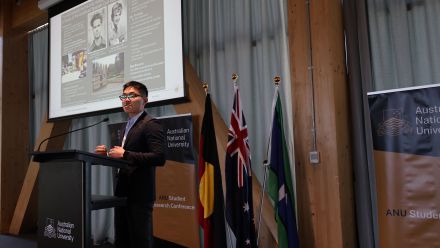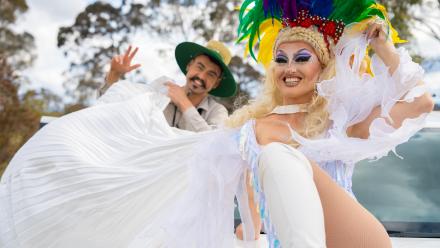Professor Howard Morphy
The research-led education at ANU has enabled me to retain the sense of being a rather privileged graduate student all my academic life, complementing any other roles I may have played.
Over the past 40 years, Aboriginal art has gained recognition as one of the world's most dynamic, diverse and enduring traditions. Through his research, Professor Howard Morphy has made a significant contribution to the reception, recognition and understanding of Aboriginal art in Australia and around the world.
Howard has pioneered several streams of research into Aboriginal art and its reflections of communities that have had-and continue to have-a marked influence in national and international arenas. His contributions to the analysis and reception of art are seminal.
ANU has long been an important place for Howard, who was awarded the JG Crawford Prize for the best thesis submitted at the University in 1978.
After returning to ANU in 1997, Howard held positions as a teacher, Director of the Centre for Cross Cultural Research, Director of the Research School of Humanities and Foundation Director of the Research School of Humanities and the Arts. He has supported many PhD research projects into Aboriginal art and promoted the importance and necessity of learning to work across cultures. He has supervised more than 100 graduate students and many of his former students now hold posts of significance in universities, art galleries and museums in Australia and around the world.
At ANU, Howard introduced a new graduate degree in interdisciplinary and cross-cultural research that has given scholars the confidence to move between fields. He has also built groups within ANU, including the Digital Humanities Hub and the recently-created Centre for Heritage and Museum Studies.
For more than 40 years, Howard has studied and nurtured a meaningful relationship with the Yolngu communities of Arnhem Land. His pioneering analysis of Yolngu art and aesthetics revolutionised the study of Aboriginal art and non-Aboriginal art in academia. He has brought Yolngu scholars into ANU and their work has been recognised as an integral part of Australia's cultural and intellectual life.
Howard has developed a number of collaborative projects with other institutions, in particular with the National Museum of Australia and the Art Gallery of New South Wales. He is eagerly awaiting the opening of the British Museum's exhibition Indigenous Australia - an enduring civilisation, produced by a curatorium, all of whom have close links with ANU.


